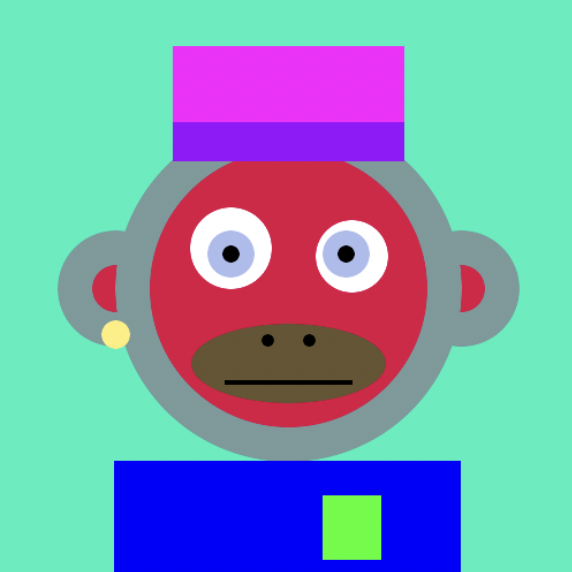OnChainMonkey: Meet One of the First 10k PFP Projects on Bitcoin
OnChainMonkey (OCM) has emerged as a historic staple of the NFT community that’s proven time and time again to be well ahead of the curve. The project is well-known for uploading its entire 10,000 NFT collection to Ethereum in a single transaction. And with the new Ordinals protocol, OCM became one of the first 10,000 PFP projects on Bitcoin.
While OnChainMonkey has made its mark in Web3, its parent company Metagood is perhaps less well-known. With a mission to empower communities and be catalysts for positive collective action, Metagood has spearheaded a number of impactful initiatives and is one of the many reasons OCM is so successful.
We spoke with the Metagood team to discuss these initiatives, the move to Blockchain, and more about the OnChainMonkey universe.
What is OnChainMonkey?
The OnChainMonkey Genesis collection consists of 10,000 colorful Ethereum NFT PFPs that depict — you guessed it — monkeys. Each monkey is made up of a combination of seven traits: fur, mouth, eyes, clothes, hat, earring, and background. Launched via a free mint on September 11, 2021, the project was quickly claimed in just four hours.
Part of what made OCM successful is its seminal status as the first-ever on-chain PFP collection created in one transaction, meaning that all metadata for each NFT is stored directly on the Ethereum blockchain. In contrast, other NFT collections require a third party to store that data, which comes with a level of risk if the storage solution fails.
Another benefit of being on-chain is cost. According to the OCM team, a typical PFP collection would take up an estimated 100 megabytes of storage space, costing over 5,000 ETH if stored on-chain. In comparison, OCM only used 0.798 ETH to deploy everything on chain.

Who created OnChainMonkey?
OnChainMonkey was created by Metagood. The founding team includes Chairman Bill Tai, the first investor in Zoom and an early investor in Canva and Dapper labs; CEO Danny Yang, the creator of Maicoin, Taiwan’s largest crypto exchange; and COO Amanda Terry, a former executive with Twitter and NBC.
The Karma and Dessert collections
In 2022, the OnChainMonkey universe expanded with the launch of the Karma and Dessert collections — both 100 percent on chain, of course. Each Genesis NFT holder (as of February 1, 2022) was given a Dessert NFT, which their original OnChainMonkey could “eat” to produce a Karma NFT. There are 10,000 Dessert tokens and three types of Desserts of varying rarity: Incredible Ice Pop, Divine Donut, and Celestial Cake.
Karma NFTs were created partly in response to criticism over the simplistic design of the Genesis collection. They consist of a 3D monkey with more detail than the original 2D OnChainMonkey NFTs. Notably, the Karma NFTs were designed by OCM’s Academy Award-nominated art team and lead animators of films including “IceAge,” “Rio,” and more.
The Karma collection did more than just look nice; it also provided holders membership to the Monkeyverse, votes in the DAO, access to Missions (experiments and tasks that earn holders rewards), and Banana tokens (off-chain tokens that live on Discord and Twitter).


The shift to Ordinals
In 2023, OCM made the shift to Bitcoin Ordinal inscriptions. Before uploading their OCM collection to Bitcoin, though, the Metagood team needed to reconcile their commitment to sustainability with the often-criticized environmental impact of Bitcoin and other proof-of-work blockchains.
They addressed this issue by uploading their OCM collection to Bitcoin in a single transaction, just like they did with their original Ethereum collection. As such, they used only 20,000 bytes of data. By doing so, Yang says Metagood and their community get “the benefits of a very secure store of value on Bitcoin without contributing to the bloat of the chain.”
So why Ordinals? Metagood didn’t shift to Ordinals to capitalize on a fad; they sensed a different kind of opportunity. “People still don’t understand the value of putting data on Bitcoin,” says Yang. He explains that, as a protocol, Ordinals is incomplete. But when the protocol comes to fruition, Yang and the rest of the Metagood team believe Ordinals may be better suited for NFT-type inscriptions than Ethereum.
“Ethereum’s smart contracts are great for NFTs, but Bitcoin is more secure,” Yang says. “If you think something is valuable, it should be on the most valuable and most secure chain.”
OnChainMonkey’s focus on impact
At the heart of OnChainMonkey’s operations lies their belief in the power of communities to bring about positive change. That’s why Metagood set its roots in Web3; the team views NFTs as the most effective tools to mobilize and incentivize these communities. “We created Metagood to solve big problems in the world,” explains Yang. “And we needed big communities to do that.”
To work toward solving these problems, Metagood created a decentralized autonomous organization (DAO) comprising OCM holders. Fifty percent of trading revenues generated by OCM are channeled back into the DAO, where members have the power to vote on how the funds are used.
The DAO has resulted in a long list of charitable projects. In March 2022, the company launched the OCM Earth collection, which raised nearly $200,000 for Save the Children’s Ukraine Crisis Relief Fund. It also partnered with Axie Infinity to hold a charity tournament that raised over $450,000 to help rebuild typhoon-impacted homes in the Philippines. In December 2022, the community used part of the DAO’s funds to host a Christmas party at a small Brazilian orphanage where the kids were given OnChainMonkey coloring books.
“It’s incredible the global reach we’ve had. But it’s also brought change at a local scale.”
Amanda Terry, Metagood COO
Further, the OCM community has also chosen to donate some of their valuable NFTs to support projects that the DAO selects. Shortly after the Genesis mint in 2021, a member donated their OCM NFT to Giga, an organization that brings the internet to schools worldwide. In early 2022, another member donated a Genesis NFT to raise funds to support the United Nation’s Life Below Water initiative to promote coral reef restoration, a cause chosen by the OCM community’s DAO.
“It’s incredible the global reach we’ve had,” says Terry. “But it’s also brought change at a local scale.” Community members have been able to leverage the DAO’s resources to carry out projects in their own communities, such as beach cleanups in Belize, rehabilitating a skate park in Brazil, and creating custom items to auction for charity.

On the surface, OnChainMonkey may appear to be just another high-value NFT collection with expensive floor prices and a duplicate collection on Bitcoin. However, from Metagood’s perspective, everything they do is rooted in their core values: respect, integrity, sustainability, and enrichment.
“Those values resonate with people,” says Terry, “because they realize that Web3 can be used to create significant wealth for communities, but it can also be used to do good in the real world.”
The post OnChainMonkey: Meet One of the First 10k PFP Projects on Bitcoin appeared first on nft now.

